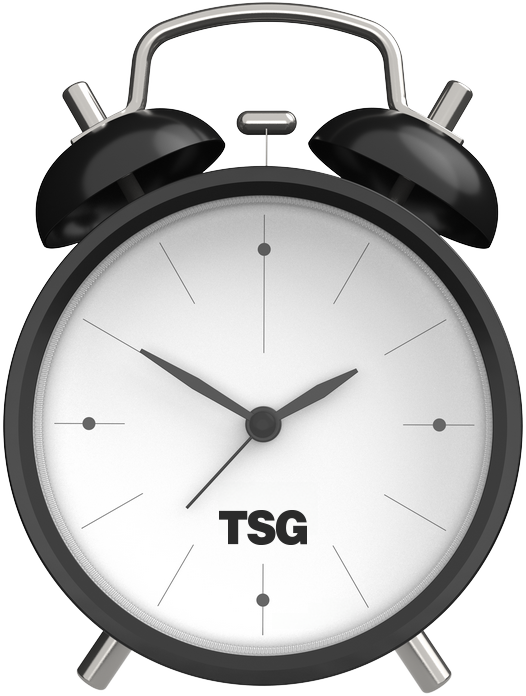When juggling short-term and long-term goals, it’s essential not to let the immediate overwhelm your vision for the future. You’ve got to break down your long-term aspirations into smaller, manageable tasks that feed into your bigger objectives. Think of it as setting up stepping stones that lead you to your ultimate destination. But how do you guarantee these steps are neither too small to matter nor too big to achieve? Let’s explore how to strike that perfect balance.
Why Balancing Short-Term and Long-Term Goals is Essential
Focusing only on the short term may bring quick wins, but often at the risk of missing the bigger point. On the other hand, aiming only for long-term success can delay satisfaction and reduce your flexibility in life.
Balancing both ensures:
Efficient use of resources: By setting both goals, you use time, money, and energy more effectively, leading to greater overall productivity.
Higher personal and professional growth: Focusing on both short—and long-term goals ensures continuous improvement and adaptation to new challenges.
Better income and career stability: Short-term financial wins and strategic career moves create the foundation for long-term financial security.
Stronger relationships and social networks: Balancing your career goals with personal life goals strengthens relationships with family, friends, and professional networks.
A clearer perspective on values and life choices: Striking the right balance makes you more mindful of what matters most, helping guide your decisions.
The Difference Between Short-Term and Long-Term Goals
Before discussing how to manage both goals, let’s clarify their differences.
Short-Term Goals: Immediate Focus
Short-term goals are those you aim to achieve in a short time, typically within a few days, weeks, or months. They often serve as stepping stones to larger, long-term objectives. These practical and action-oriented goals provide quick results that motivate you to keep moving forward.
For example:
- Saving a small amount of money monthly
- Completing a certification course
- Boosting your salary through a side hustle
How Short-Term Goals Set You Up for Long-Term Success
Short-term goals are often temporary, but their effects can pave the way for bigger plans, especially in high-stakes careers like medicine. If you’re exploring how short-term wins can connect to long-term meaning, this guide on Ikigai and purpose in medicine offers valuable insight.
Long-Term Goals: Vision With a Horizon
Long-term goals extend over a longer period, usually years. They require more strategic planning, effort, and patience. While they may not deliver immediate rewards, their outcomes are often substantial and impactful.
Think of:
- Retirement investment strategies
- Earning a degree
- Building a business or buying a home
Why Long-Term Goals Matter
Long-term goals provide direction and purpose. They act as your guiding star, ensuring your daily activities contribute to a greater future. Without them, you may drift through life without clear priorities.
Tips To Balance Short-Term and Long-Term Goals Without Losing Focus
Finding the correct balance between short-term and long-term goals is one of the most critical challenges individuals, students, and companies face. Whether you’re managing your income, planning your career, or forecasting the growth of a business, understanding the differences between these two goal types can greatly impact your overall success.
1. Establishing Clear Short-Term and Long-Term Objectives
To effectively balance your aspirations, define clear short-term and long-term objectives using the SMART criteria—specific, measurable, achievable, relevant, and time-bound. This approach guarantees that each goal directly supports your broader ambitions. Think of your short-term objectives as significant milestones.
Example of SMART Short-Term Goal:
- Specific: Save $500 for a vacation
- Measurable: Track savings through a budgeting app
- Achievable: Set aside $50 each week
- Relevant: Aligns with your personal need for a break
- Time-bound: Complete within the next 10 weeks
They’re not just tasks but the stepping stones to your long-term goals, making the entire journey less overwhelming. Regularly revisit and tweak these goals to stay on track, especially as circumstances change. Use visual tools like charts or goal boards to keep these objectives clear, constantly reminding you of what you’re working towards and why it matters.
Example of SMART Long-Term Goal:
- Specific: Save $100,000 for retirement
- Measurable: Set up automatic contributions to a retirement account
- Achievable: Research retirement options and create a plan
- Relevant: Aligns with your desire for financial independence
- Time-bound: Reach by the time you are 60
2. Implementing Effective Time Management Techniques
While establishing your goals is essential, effectively managing your time to achieve them is equally important. By employing the Pomodoro Technique, you break your work into manageable 25-minute chunks, which can enhance your focus on both short-term and long-term objectives. Setting specific time limits for daily tasks guarantees you’re using time efficiently, prioritizing activities that align with your goals.
Here’s a quick guide to help you balance your priorities:
| Technique | Purpose | Benefit |
|---|---|---|
| Pomodoro Technique | Focus and productivity | Manages both short-term and long-term tasks |
| Time Limits | Efficiency and prioritization | Aligns daily tasks with long-term goals |
| Weekly Reviews | Assessment and adjustment | Balances immediate and future goals |
Utilizing digital tools for scheduling keeps you on track, while flexible timelines for long-term goals guarantee you don’t lose sight of your ultimate aspirations.
3. Leveraging Visual Tools for Goal Tracking
Visual tools such as goal boards, charts, and progress tracking apps are excellent for staying on course. These tools visualize your goals, keeping short-term and long-term objectives front and center.
- Use digital dashboards for real-time progress tracking to stay motivated and accountable.
- Create a vision board for long-term goals and a daily task list for short-term goals.
How Visual Tools Help:
- Keep your goals in sight to maintain focus.
- Provide an overview of progress, helping you adjust when necessary.
Increase motivation by celebrating small wins.
4. Fostering a Culture of Accountability and Collaboration
Building on the foundation of effective goal tracking through visual tools, it’s equally important to cultivate a culture of accountability and collaboration within your team. Engaging everyone in setting and understanding both short-term and long-term goals fosters a culture where every team member feels part of the journey.
| Strategy | Benefit | Implementation |
|---|---|---|
| Regular Team Meetings | Boosts morale, aligns focus | Weekly/Bi-weekly |
| Accountability Partners | Increases motivation, enhances goal achievement | Pair team members |
| Anonymous Feedback | Refines processes, values all voices | Monthly feedback |
| Inclusive Decision-Making | Enhances ownership, responsibility | During major meetings |
These strategies enhance accountability and strengthen collaboration, ensuring everyone is invested in both immediate and future successes.
5. Adapting Strategies to Evolving Challenges and Opportunities

To stay ahead in a constantly changing environment, you must reassess and adapt your strategies to align with new market conditions and organizational priorities to prioritize your goals. Implementing a flexible planning framework is essential. This approach allows you to swiftly pivot in response to unforeseen challenges or opportunities, ensuring you’re always prepared. You’ll need to utilize performance metrics and feedback loops to keep your strategies effective, making adjustments when outcomes aren’t up to par.
Stay focused on balancing immediate needs with long-term goals by breaking them into smaller, actionable steps that fit into your daily routine.
Avoiding Common Risks
Without balance, you could face several risks:
- Burnout from chasing too many short-term tasks
- Lost opportunities due to ignoring long-term investment planning
- Stress from unclear direction
Regular self-analysis and monitoring your SMART goals can help you recalibrate before small things become major issues.
Frequently Asked Questions
How to Balance Between Short-Term and Long-Term Goals?
To balance your short-term and long-term goals, define clear, achievable objectives. Break down your long-term goals into smaller tasks you can tackle daily or weekly.
How Can You Most Appropriately Balance Short-Term and Long-Term Results?
You must prioritize tasks effectively to balance short-term and long-term results. Use the Eisenhower Matrix to sort them by urgency and importance. Break down your long-term ambitions into smaller milestones and keep track of these using visual tools like progress charts. Schedule regular reviews to monitor your advances in both areas.
How Do You Balance Short-Term Goals With Long-Term Vision?
Define clear objectives for both to balance your short-term goals and long-term vision. Use tools like the Eisenhower Matrix to prioritize daily tasks that align with your broader goals. Keep a visual reminder like a goal board to stay motivated and guarantee that your daily efforts steer you towards your long-term aspirations.
How to Maintain Focus on Long-Term Goals in a Short-Term World?
To maintain focus on your long-term goals in a fast-paced world, you’ll need to break them down into smaller, achievable tasks. Use tools like goal boards to keep your vision in sight daily. Regularly review your progress—weekly or monthly—to adjust as needed. Don’t forget to allocate specific times for deeper focus on big projects, even amid daily tasks. This way, you’re always working towards your bigger picture without getting sidetracked.
Conclusion
Remember to set clear objectives using SMART criteria and break your long-term goals into bite-sized pieces to keep your eyes on the prize while nailing your daily targets. Balancing short-term and long-term goals requires careful planning and consistent effort. With clear objectives, effective time management, visual tracking tools, and accountability, you can achieve lasting success without sacrificing immediate needs. Stay committed, and remember that every small step you take today brings you closer to your future aspirations. Always be ready to tweak your strategies as new challenges and opportunities arise. You’ve got this!




















